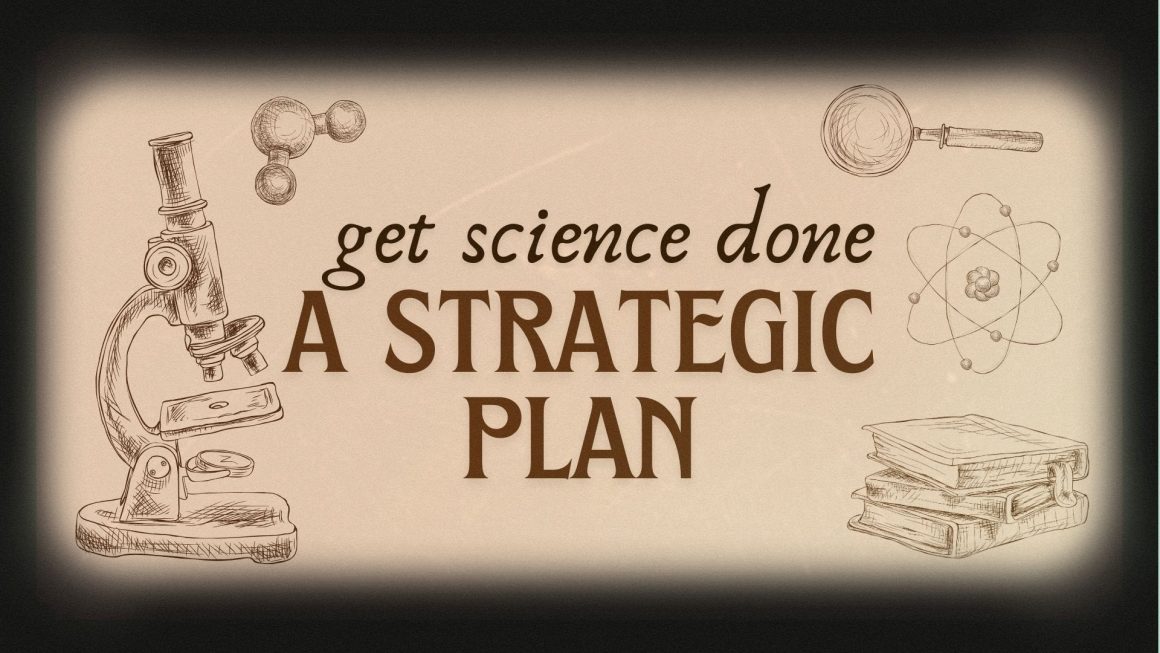
Faculty of Science aims to Get Science Done with new strategic plan
By Kimberly Taylor, July 11 2024—
The Faculty of Science at University of Calgary launched their new strategic plan, Get Science Done, on May 22. Under the leadership of the new dean for the Faculty of Science – Dr. Kristin Baetz – an internal task team went through a nearly two year planning and consulting process to develop the new five year plan with a vision for 2030.
“By 2030, the Faculty of Science at the University of Calgary is home to some of the nation’s most exciting large-scale collaborative research initiatives. Alberta’s entrepreneurial spirit drives a culture that Gets Science Done! The faculty attracts talented and ambitious students with a penchant to learn by doing, increasing the applications from diverse people locally, across the country and the globe,” reads a statement from the Get Science Done strategic plan.
Get Science Done has four strategic pillars – each with their own strategic vision – Radical Research Collaboration, Activating Science Education, Destination Science District and A Thriving Culture. Together they aim to support the implementation of the vision stated in the strategic plan.
Dr. Kristin Baetz – dean for the Faculty of Science – spoke about the Get Science Done strategic plan in an interview with the Gauntlet.
“This strategic plan really touches everybody’s life, and I think it will change how we operate at the university and our impact into the community,” Baetz said.
Baetz explained that each of the four strategic pillars has their own implementation plans. Progress has already been made on several of the pillars since the launch of Get Science Done in May. As part of the Activating Science Education pillar stipends for graduate students will be increased to attract top talent.
“We have passed through the Faculty Council our new stipend minimum guidelines and they will be raised each year. Our end goal is to be one of the most competitive in Canada for stipends because graduate students work incredibly hard. They are the engines that keep our research programs going and they should be able to have a living wage or a salary that allows them to live so that one has been passed,” Baetz said.
Baetz shared that for A Thriving Culture pillar a new director of student experience has been hired, and that student advising will be a top priority within this pillar.
“We’ve actually just hired a new director of student experience. And one of our first challenges is to really look at our student advising and seeing how we [can] really improve that so that our students get the advising they need in a quick and timely manner because that is hugely stressful for students when they can’t access advising in a timely manner.” Baetz said.
Baetz shared the vision for a new building for the Destination Science District pillar and that funding has been secured for its construction. The building will include new lecture theathres, learning labs and a research building, aiming to be a central service area for science students.
“[The building] will create this destination in that quadrant of campus connecting all the science buildings. It will be the science hub. We will have the big student science advising area [and]we’re going to put both the undergrad [and] grad students.” Baetz said.
Baetz explained that while the Destination Science District pillar is about becoming a destination for researchers, it is also intended to be a destination for the local community to come and engage with science as well.
“The way the building or the mandate of the building to be designed is that people can actually see research happening. They’re going to see science on display. The outdoor quad will be built as an Indigenous classroom. There will be lots of ways to interact [and there is a plan] to have a geological garden so people can learn about rock formations. It’s not just about a physical space. It’s about a place where people are going to come and learn about science.” Baetz said.
Baetz highlighted that one of the main overarching goals of Get Science Done is deepening and broadening connections both within the disciplines of the Faculty of Science and with Calgary and Alberta. Goals include making graduate students career-ready and aiming for greater co-op numbers.
“At its heart of the plan, it’s about how science can serve Calgary and Alberta and beyond. We want to make sure that our students when they graduate from the faculty of science [that] they are not only outstandingly trained as a, for example, computer scientist or a chemist, but they are also now having additional wraparound skills —so they’re workplace ready,” Baetz said.
Additionally, Baetz explained that embedded throughout the plan is a commitment to including Indigenous ways of knowing within the faculty of science.
“Our end goal by 2030 would be for every single science student to have a real deep connection and experience and exposure to Indigenous science,” said Beatz. “We are also committed to hiring Indigenous faculty. And in the last two years, we’ve hired four [and]. we’re actually about to start a search for a fifth.” Baetz continued.
“We are now working with architects and we’ve included on that architect team hiring Indigenous architect to really ensure that the space that we’re creating weaves in Indigenous culture that is a welcoming place for Indigenous scientists and Indigenous students and the community.” Baetz said.
The Get Science Done strategic plan 2024-2030 can be accessed here.
